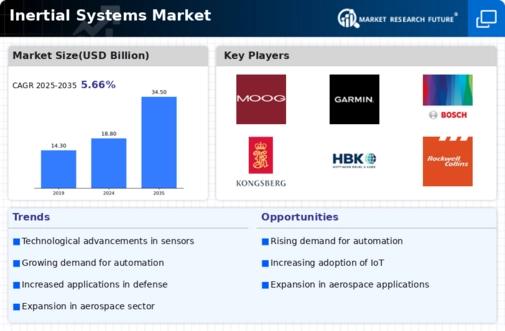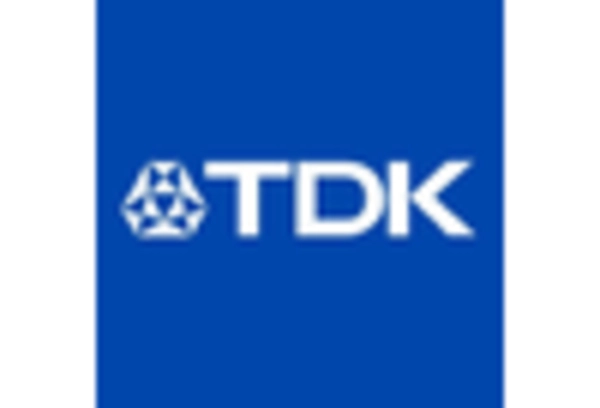Growth in Consumer Electronics
The Inertial Systems Market is witnessing growth driven by the increasing integration of inertial systems in consumer electronics. Devices such as smartphones, tablets, and wearable technology are increasingly utilizing inertial measurement units (IMUs) for various applications, including motion sensing and navigation. The consumer electronics market is projected to reach approximately 1 trillion USD by 2025, with inertial systems playing a vital role in enhancing user experience and functionality. This trend is likely to propel the demand for miniaturized inertial systems, as manufacturers seek to incorporate advanced features in compact devices. The proliferation of smart devices is expected to further stimulate innovation within the inertial systems market.
Military and Defense Investments
The Inertial Systems Market is bolstered by substantial investments in military and defense applications. Governments worldwide are increasingly focusing on enhancing their defense capabilities, leading to a rise in demand for inertial systems used in missiles, drones, and other military equipment. As of 2025, defense spending is expected to exceed 2 trillion USD, with a significant portion allocated to advanced navigation systems. Inertial systems are critical for precision targeting and navigation in defense applications, making them indispensable in modern warfare. This trend indicates a robust growth trajectory for the inertial systems market, as defense contractors seek to integrate cutting-edge technologies to maintain a competitive edge.
Emerging Applications in Robotics
The Inertial Systems Market is poised for growth due to emerging applications in robotics. As industries increasingly adopt automation and robotics for various tasks, the need for precise navigation and control systems becomes paramount. In 2025, the robotics market is projected to surpass 200 billion USD, with inertial systems being essential for ensuring accurate movement and positioning. This growth is driven by advancements in technology that enable the development of more sophisticated inertial systems capable of operating in dynamic environments. The integration of inertial systems in industrial robots, service robots, and autonomous vehicles is likely to enhance their performance, thereby contributing to the overall expansion of the inertial systems market.
Expansion of Aerospace Applications
The Inertial Systems Market is significantly influenced by the expansion of aerospace applications. With the increasing number of commercial flights and the rise of space exploration initiatives, the demand for advanced inertial systems is on the rise. In 2025, the aerospace sector is anticipated to account for a substantial share of the inertial systems market, driven by the need for enhanced navigation and control systems in aircraft. The Inertial Systems Market is projected to reach over 800 billion USD, with inertial systems being pivotal in ensuring safety and efficiency. This growth is further supported by advancements in technology, which enable the development of more sophisticated inertial measurement units (IMUs) that can withstand the harsh conditions of aerospace environments.
Rising Demand for Autonomous Systems
The Inertial Systems Market is experiencing a notable surge in demand due to the increasing adoption of autonomous systems across various sectors. This trend is particularly evident in the automotive and aerospace industries, where inertial systems play a crucial role in navigation and control. As of 2025, the market for autonomous vehicles is projected to reach approximately 60 billion USD, with inertial systems being integral to their functionality. The need for precise positioning and navigation in these systems drives innovation and investment in inertial technologies, thereby enhancing the overall market landscape. Furthermore, the integration of inertial systems in drones and robotics is expected to contribute significantly to market growth, as these applications require high levels of accuracy and reliability.

















Leave a Comment